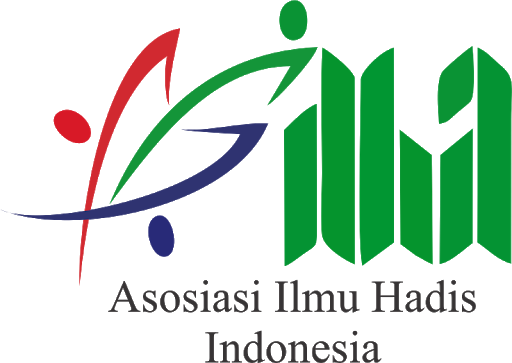Questioning the Validity of Hadith in the Digital Era
Menyoal Validitas Hadits di Era Digital
DOI:
https://doi.org/10.14421/livinghadis.2023.4156Keywords:
validitas, haditsAbstract
The digital era has an influence on understanding information or messages obtained from various social media, including hadith. This requires Muslims to be careful in understanding the validity criteria of hadith. This paper aims to describe the validity of hadith in the digital era, with several important questions; Are there differences in the study of hadith before and after digital tools? Is the study of hadith in the digital era still important?, and how is the analysis of issues related to the validity of hadith in the digital era? The method used in this research is library research with descriptive analysis. Sources of data obtained in the form of books, articles, websites and other reliable documents that are in accordance with the object of research. The results of this study are that: the validity of a hadith in the digital era can be known by referring to the criteria for authentic hadith. The criteria in terms of valid sanad hadith are continuous sanad, fair narrators and dhabit. Meanwhile, in terms of the matan, there are no syadz and 'illat
 Abstract viewed: 701 times
|
Abstract viewed: 701 times
|
 pdf downloaded = 985 times
pdf downloaded = 985 times
References
Akmaluddin, M. (2021). Sanad Digital: Ijazah Hadis Musalsal dalam Kajian Hadis Virtual di Grup dan Halaman Facebook. Nabawi: Journal of Hadith Studies, 2(1). https://doi.org/10.55987/njhs.v2i1.44
Al-Qaththan, S. M. (2005). Pengantar Studi Ilmu Hadis. Pustaka Al-Kautsar.
As-Shalih, S. (2009). Membahas Ilmu-Ilmu Hadis. Pustaka Firdaus.
Basid, A. (2017). Kritik Terhadap Metode Muhammad Al-Ghazali Dalam Memahami Hadis Nabi Muhammad SAW. KABILAH : Journal of Social Community, 2(1), 1–35. https://doi.org/10.35127/kbl.v2i1.3079
Dzakiy, A. F., Ustadiyah, A. D., & ... (2022). Hadis Palsu, Pemalsuan dan Pencegahannya Di Era Digital. Al-Bayan: Journal of …, 1(2), 1–13. https://ejournal.staikhozin.ac.id/ojs/index.php/al-bayan/article/view/91
Ismail, M. syuhudi. (1992). Metodologi Penelitian Hadis Nabi. Bulan Bintang.
Kesuma, D. A. (2021). Analisis Metode Kritik Hadis Dan Pandangan Hukum Indonesia Terhadap Berita Hoax. AKSELERASI: Jurnal Ilmiah Nasional, 3(2), 56–65. https://doi.org/10.54783/jin.v3i2.409
Kosasih, D. (2013). Metodologi Studi Hadis Tematik Kontemporer. In Journal of Chemical Information and Modeling (Vol. 53, Issue 9, pp. 1689–1699).
Malik, H. A. (2017). Naqd Al-Hadis sebagai Metode Kritik Kredibilitas Informasi Islam. Journal of Islamic Studies and Humanities, 1(1), 37–66. https://doi.org/10.21580/jish.11.1373
Marhumah. (2014). Ulumul Hadis: Konsep, Urgensi, Objek Kajian, Metode, dan Contoh. SUKA-Press.
Mujibatun, S. (2014). Paradigma Ulama Dalam Menentukan Kualitas Hadis Dan Implikasinya Dalam Kehidupan Umat Islam. Analisis: Jurnal Studi Keislaman, 14(1), 201–238.
Rahmatullah. (2018). Otentisitas dan Validitas Hadis Nabi serta Contoh-Contoh Hadisnya dan Problematikanya. Journal Of Qur’an And HAdith Studies, 7(1), 42–60. http://journal.uinjkt.ac.id/index.php/journal-of-quran-and-hadith/article/view/13389
Rofiah, K. (2018). Studi Ilmu Hadis. IAIN PO Press, 205.
Rozami, M. (2019). Hadist ditinjau dari kualitas sanad dalam proses istimbath hukum. Samawat, 03(02), 73–82. http://www.jurnal.staiba.ac.id/index.php/samawat/article/view/242/232
Rusli, M., & Husain HPW, N. (2017). Problematika dan Solusi Masa Depan Hadis dan Ulumul Hadis. Al-Fikr: Jurnal Pemikiran Islam, 17(1), 123–138.
Sulidar, d. (2019). Metodologi Penetapan Kaidah Keshahihan Hadis (Studi Komparatif Pemikiran M. Syuhudi Ismail dan Muhammad Al-Ghazali). 5(1), 1–28.
Supian, A. (2015). Konsep syadz dan aplikasinya dalam menentukan kualitas hadis. Nuansa: Jurnal Studi Islam Dan Kemasyarakatan, VIII(2), 185–195. https://ejournal.iainbengkulu.ac.id/index.php/nuansa/article/view/396
Suryadilaga, M. A. (2015). Ulumul Hadis. Kalimedia.
Suryadilaga, S. dan M. A. (2009). Metodologi Penelitian Hadis. TH-Press.
Suryadinata, M. (n.d.). Kritik Matan Hadis: Klasidk Hingga Kontemporer. 111–129.
Tajang, A. D. (2019). Kualitas Digitalisasi Hadis: Analisis SWOT pada Aplikasi OOH. Tahdis: Jurnal Kajian Ilmu Al-Hadis, 10(1), 54–75. https://doi.org/10.24252/tahdis.v10i1.9796
Thahhan, M. (1997). Ulumul Hadis. Titian Ilahi Press.
Ulum, B. (2020). MENELISIK KODIFIKASI HADIS: Upaya Menakar Validitas Hadis Sebagai Sumber Kedua di Tengah Kepungan Kelompok Inkar al-Sunnah. MAQASHID Jurnal Hukum Islam, 3(2), 1–15. https://doi.org/10.35897/maqashid.v3i2.422
Utomo, T. P. (2020). Literasi Informasi di Era Digital. Buletin Perpustakaan Universitas Islam Indonesia, 3(1)(0), 61–82. https://journal.uii.ac.id/Buletin-Perpustakaan/article/view/15194
Yuliharti, S. S. A. dan. (2018). Metode Pemahaman Hadis. Indragiri Dot Com. https://books.google.co.id/books?id=UIUiEAAAQBAJ&lpg=PR1&vq=kota terbit&dq=urgensi validitas hadis era kontemporer&lr&hl=id&pg=PR10#v=onepage&q=kota terbit&f=false
Zulfikar, E. (2020). Otentisitas dan Validitas Hadis dalam Perspektif Ulama Modern. 2(2), 194–218.
Downloads
Published
Issue
Section
License
Copyright (c) 2023 Desi Asmarita

This work is licensed under a Creative Commons Attribution-ShareAlike 4.0 International License.
- Authors who publish with this journal agree to the following terms:
- Authors retain copyright and grant the journal right of first publication with the work simultaneously licensed under a Creative Commons Attribution License that allows others to share the work with an acknowledgement of the work's authorship and initial publication in this journal.
- Authors are able to enter into separate, additional contractual arrangements for the non-exclusive distribution of the journal's published version of the work (e.g., post it to an institutional repository or publish it in a book), with an acknowledgement of its initial publication in this journal.
- Authors are permitted and encouraged to post their work online (e.g., in institutional repositories or on their website) prior to and during the submission process, as it can lead to productive exchanges, as well as earlier and greater citation of published work.
















